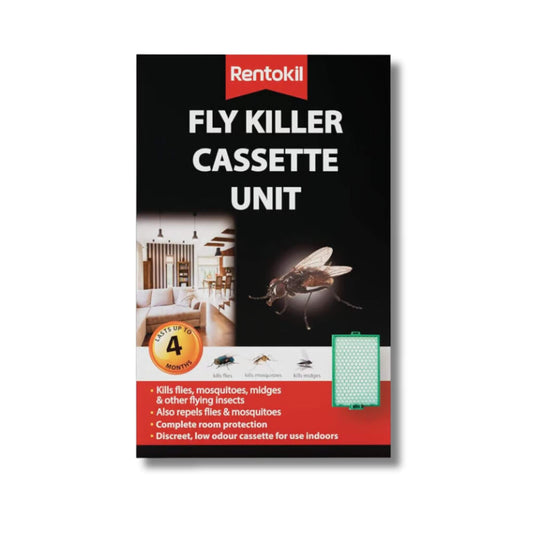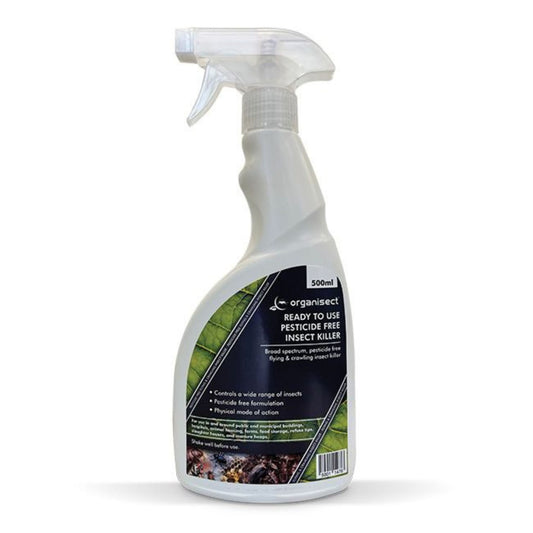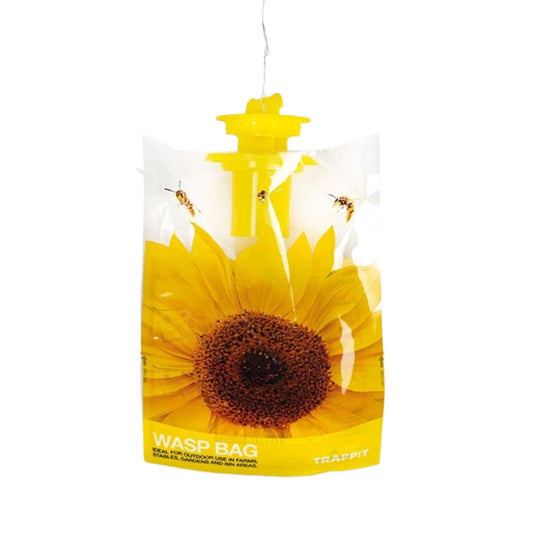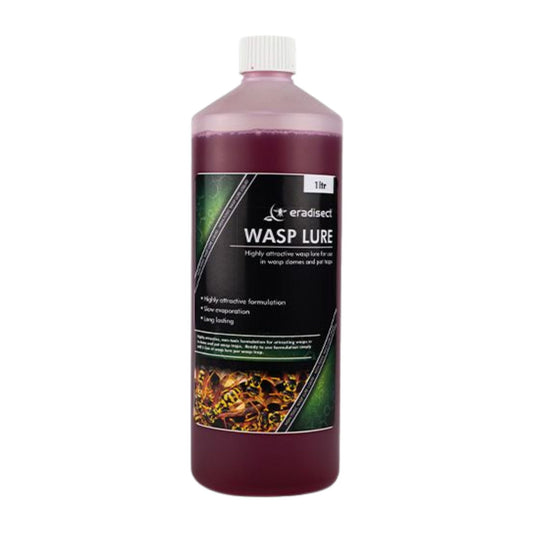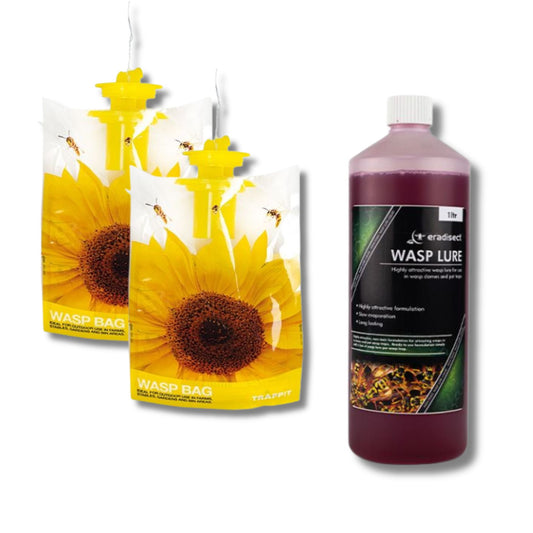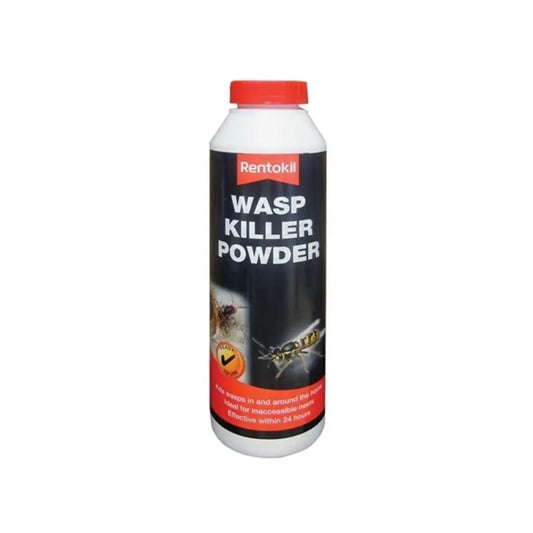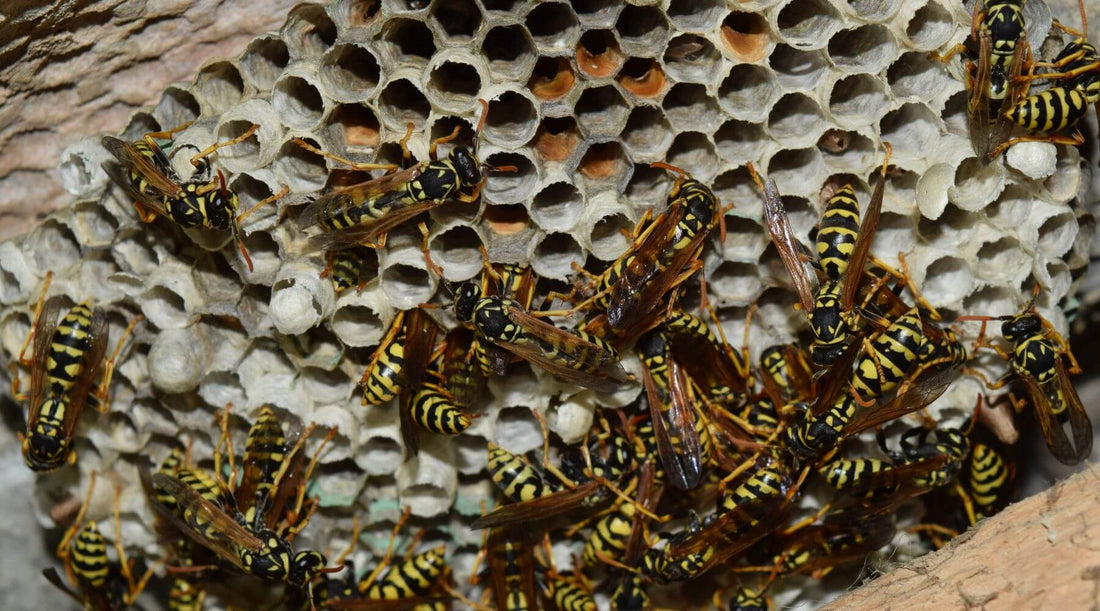
Top 10 Tips on How to Kill Wasps & Remove Wasp Nests Safely
Share
If you ever struggle with wasps around your home or business, take some comfort from the fact that you’re not alone. Every year, thousands of people face wasp infestations. These can wreak havoc on their daily lives, lead to painful stings, and in the worst case lead to significant health risks.
In this article, we have collated our top 10 tips on how to kill wasps safely and effectively as well as remove wasp nests safely. These tips are based solely on our expert guidance.
#1 Only Kill Wasps When Necessary
Despite being well-known for their aggressive and dangerous antics, wasps may provide benefits. This includes your local environment, where they can play an important role in maintaining balance. For instance, wasps feed on insects, which helps control pest populations.
We recommend only trying to eliminate a wasp nest when it is located close to where people or pets are likely to be. This includes entrances, patios and indoors. On the contrary, if the nest is located in rarely visited parts of your property then they pose a lesser threat and can be left alone. Consider leaving nests alone until the colder months when wasps naturally die off.
#2 Understand When and Where to Look for Nests
It is common for queen wasps to begin building their nests during the spring once the weather gets warmer. They like to choose more sheltered locations. This includes under eaves (sections of the roof which extend beyond external walls), inside wall cavities, garages and even sheds.
Spotting wasps and their nests early detection is key. In Spring, a nest the size of a table tennis ball is much easier to treat compared to a full-sized nest during the peak of summer. By this time they can house hundreds or even thousands of wasps.
#3 Identify Wasp Nest Locations Carefully
Wasp nests are lightweight structures similar to paper mache and made from materials such as chewed wood and saliva. The most straightforward way to locate a wasp nest is to carefully observe the flight or worker wasps as they come and go from it. Nests come in all shapes and sizes but tend to grow substantially by the end of summer so early detection is preferable.
#4 Be Cautious with DIY Removal Techniques
DIY wasp removal methods can be effective for smaller nests which spring up from early spring. But be warned, disturbing a wasp nest, especially a larger one, can trigger an aggressive response. This is because wasps release pheromones, chemicals that signal other wasps in the colony to attack. If you’re unsure of what to do or are allergic to stings, we strongly recommend contacting a pest control professional.
#5 Treat the Nest at the Right Time of Day
Wasps are most active during the warmer parts of the day. This makes them less active in cooler parts of the day, like early morning or late evening. Treating the nest during these cooler times of the day can reduce the risk of being stung. Make sure you aim them at the entrance of the nest for maximum effectiveness.
For killing wasps, you may also wish to consider using non-toxic wasp killer sprays if available or wasp traps.
#6 Know How to Handle Individual Stings
Even if you’re not treating a nest directly, you may encounter individual wasps. A sting can be painful, and for those with allergies, it can be dangerous. To treat a sting, act quickly, wash the area with soap and water, apply a cold compress, and avoid scratching. A pharmacist may recommend antihistamines and creams to relieve any itching. In severe cases, you must seek emergency medical help immediately. This includes if you have difficulty breathing or swelling.
#7 Avoid Attracting Wasps by Controlling Waste and Food Sources
Wasps are drawn to sugary foods including BBQs, particularly in late summer. Keep your bins sealed and place bins and food away from doors and windows. When dining outdoors, keep food and drink covered to avoid attracting wasps to your area.
#8 Seek Professional Help for Larger or Inaccessible Nests
Larger nests including those in hard-to-reach spaces or highly visited areas may require professional pest controllers. This is because professionals have the knowledge and equipment to treat nests safely and effectively. This may include insecticides that eliminate the colony without disturbing the nest directly.
#9 Understand the Dangers of Aggressive Wasps
Wasps are generally defensive, but they’ll sting if they feel threatened. When a wasp stings, it releases a distress signal that can provoke other wasps to join the attack. Children, elderly people, and pets are particularly vulnerable. Professional help is recommended if there’s heavy wasp activity near your home or in a business setting.
#10 Remove Treated Nests in Autumn or Winter
After a nest is treated, you will often find that wasps abandon it when colder months arrive. You may be able to safely remove the nest in autumn or winter when it is inactive. Be careful and ensure you wear gloves and protective clothing especially if the nest was treated with pesticides. Alternatively, you can request removal from your pest control provider for an additional charge.
Final Thoughts
By taking these tips onboard you are in a strong position to control wasps with greater confidence. If followed, these will ensure a safer, wasp-free environment for your home or business.
We go to great lengths to ensure that all our DIY wasp control products are effective, fast & easy-to-use. You may also find our expert guide useful if you want to learn more about getting rid of wasps from your home or workplace.

